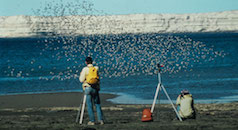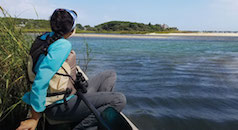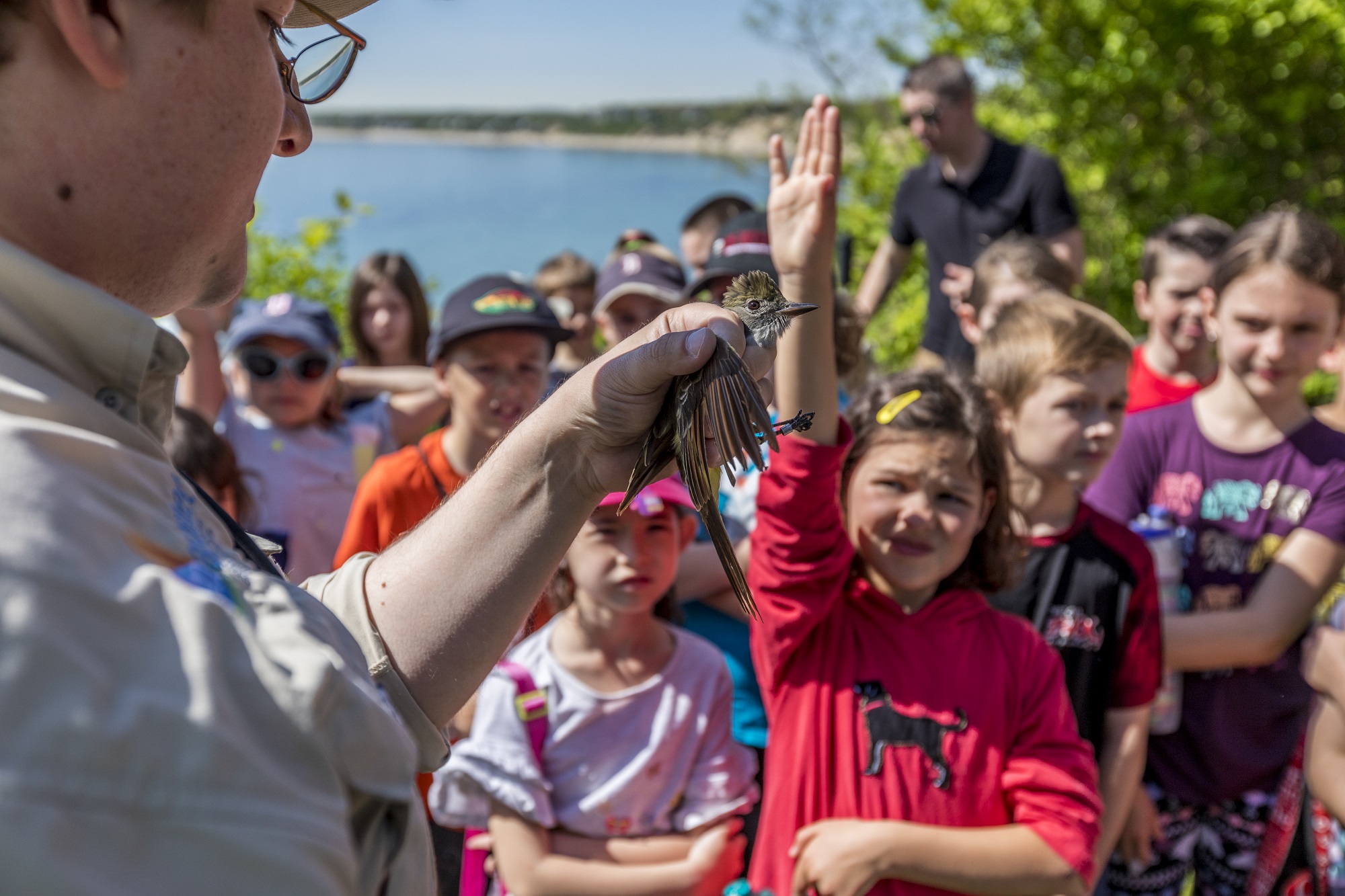Search Results

New Fishing Opportunities: Invasive, Emerging and Underutilized Species
Fishing communities are being disproportionately impacted by climate change and are incredibly vulnerable in the Gulf of Maine where there is low diversity of fisheries resources and limited access to those resources. We are working to develop new fishing opportunities that support resilient coastal communities and ecosystems by targeting invasive, emerging, and underutilized species.
Ice and Fire
Returning to the Alaskan arctic to survey nesting shorebirds this year, I had Robert Frost’s poem “Fire and Ice” on my mind, although not in that order… Climate change is making the weather more unpredictable, as people are experiencing everywhere, while in the arctic those changes are noticeably accelerated. Last spring I attended a meeting of some of the top meteorologists working in Alaska with the goal to better plan what sort of season we might expect. The consensus was that the season would either be colder or warmer than normal, and either wetter or dryer than normal, and they noted their past efforts to predict were less accurate than guessing! Not very helpful, but also a clear indicator of...
The Small Sit
Crafting Volunteer Drop-In Day
Help us create some "fishy" crafts for the Plymouth Herring Run Festival! Stop by Manomet's headquarters anytime from 10am-5pm on Thursday, April 4th, and get your craft on while helping continue a special tradition—creating "fish sticks" for kids to decorate at the annual Plymouth Herring Run Festival! We'll have all of the materials you need to trace, cut, and glue. For kids who would like to volunteer, we'll have a decoration station so they can take their very own "fish stick" home! Hundreds of families attend the festival each year, so we're counting on our volunteers to help us create a huge "school" of these friendly fish! Registration is encouraged. We greatly appreciate your help! Parking: Manomet is located at...
The Small Sit | Coastal Dredging: Restoration Opportunities for Shorebirds & People
Join The Small Sit, Manomet’s virtual science series, each month as we learn about the wonders of why birds migrate, the importance of river herring in coastal food webs, and so much more! Along with the climate, our coasts are changing. Saltmarsh erodes, coastal forests flood, and sand bars and beaches erode. Mike Molnar, Director of the Coastal Zone Initiative at Manomet, has been working with a number of partners to help assess the impacts of Sea Level rise, changing weather patterns, and coastal development on our coastal ecosystems and the myriad of species that call them home. The U.S. Army Corps of Engineers (USACE) orchestrates dredging of approximately two hundred million cubic yards annually from U.S. waterways for navigation and...
Happy Hour with Happy Fish
Come see Happy Fish, chat with local scientists, and try a new craft brew! Join us on Friday, April 19th from 5-8pm at the Plymouth Center for the Arts to kick off our herring migration festivities! Grab a drink and hors d'oeuvres, take photos with Happy Fish, and hear from local scientists as they highlight the importance of migratory fish passages and conservation efforts (6-7pm). And don't forget to try IndieFerm's "Anadromous Ale”, a fun reference to herring being anadromous fish! Happy Fish©, created by World Fish Migration Day, is a symbol that connects people, organizations, and projects aiming to restore free-flowing rivers for fish populations. Get excited as Happy Fish makes its way to Plymouth, MA! This is a...
Plymouth Herring Run Festival
Celebrate Earth Day and the arrival of spring with friends, family, fun, and… FISH! ** Due to weather, this event will be held on Sunday, April 21st. Join us on Sunday, April 21st, 10am - 3pm, at the Plimoth Grist Mill and along Town Brook Park for a day of family-friendly activities including herring counts, craft beer, games, live music & more! Chat with local scientists, help contribute to ongoing herring research, and take a photo with Happy Fish! Happy Fish©, created by World Fish Migration Day, is a symbol that connects people, organizations, and projects aiming to restore free-flowing rivers for fish populations. Get excited as Happy Fish makes its way to Plymouth, MA! Be sure to also join...
Manomet’s First Massachusetts Shorebird Blitz
One, two, three…go and count those shorebirds! That race-like tenor of excitement buzzed through many of us as we launched the Manomet’s first annual Massachusetts Shorebird Blitz. The blitz, organized by Manomet’s Cape Cod Shorebird Biologist Liana DiNunzio, Conservation Biologist Alan Kneidel, and North America ISS Coordinator Lisa Schibley, took place this past August 5-14 as a coordinated effort to survey key shorebird stopover sites throughout coastal Massachusetts during peak southbound migration.
Water for Shorebirds: A Flowing Collaboration on Texas Coast
Because of its proximity to the Gulf of Mexico, Chambers County, on the Upper Texas Coast, plays host to large quantities of migrating songbirds, waterfowl, and shorebirds each spring and fall. Whimbrel (Numenius phaeopus) is a species of shorebird that utilizes this area for northbound staging as they make the great trek between their wintering grounds in South America and their breeding grounds in the arctic. Manomet’s scientists began studying Whimbrel’s use of this area in 2021 with GPS tracking devices, and preliminary analysis of this movement data revealed that 96% of this species’ daytime locations were in fields related to rice production. What makes a rice field so attractive to a Whimbrel? Rice fields can act as a surrogate...
Leaning Into the Winter Wind: Shorebirds Wintering in North America
If you live in the northern latitudes of North America, the next time a winter storm is howling outside of your house at night, with temperatures well below freezing and snow blasting sideways, imagine what the conditions might be like on your nearest coast. The ocean waves will be smashing the shore in darkness, saltwater spray will be carried on the wind to coat the beach and rocks with ice. If it’s really cold, the ocean itself might be a slush-ice slurry, pushing high on local beaches with each wave. You might be surprised that out there, in the storm’s dark gloom hunkered against the wind and pounding surf, in life challenging conditions, are some very tough little birds. Three...



